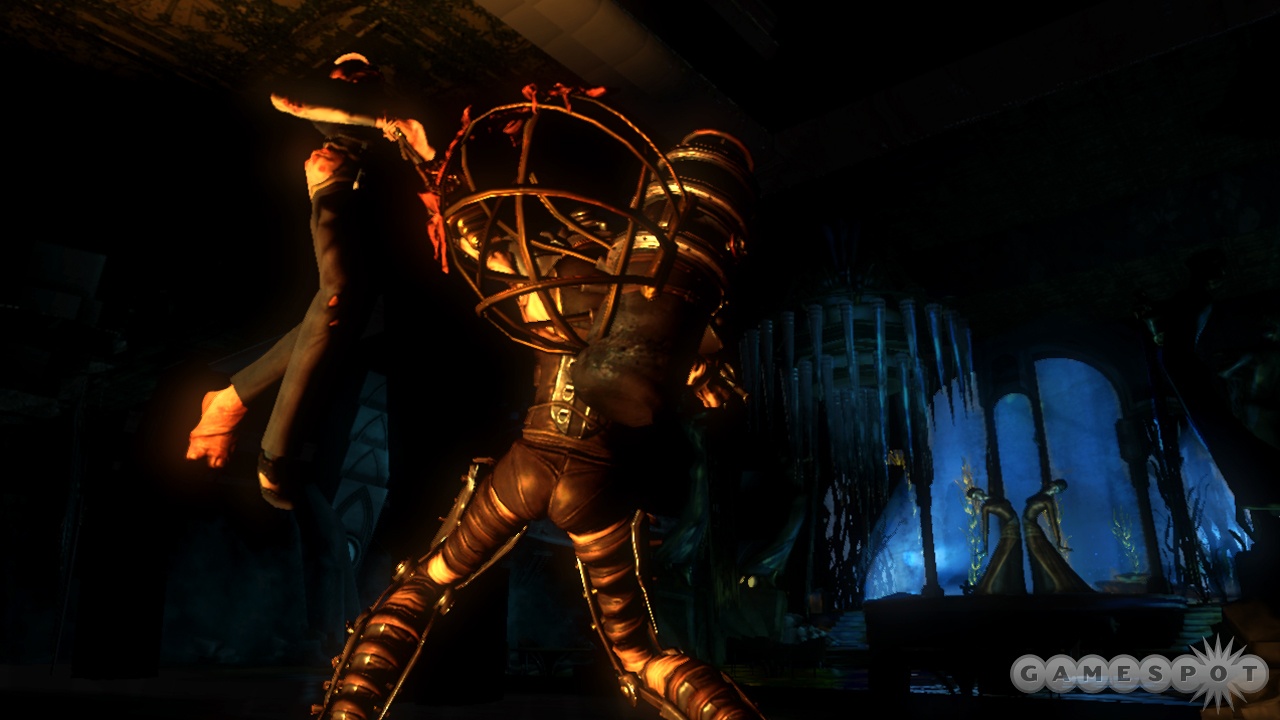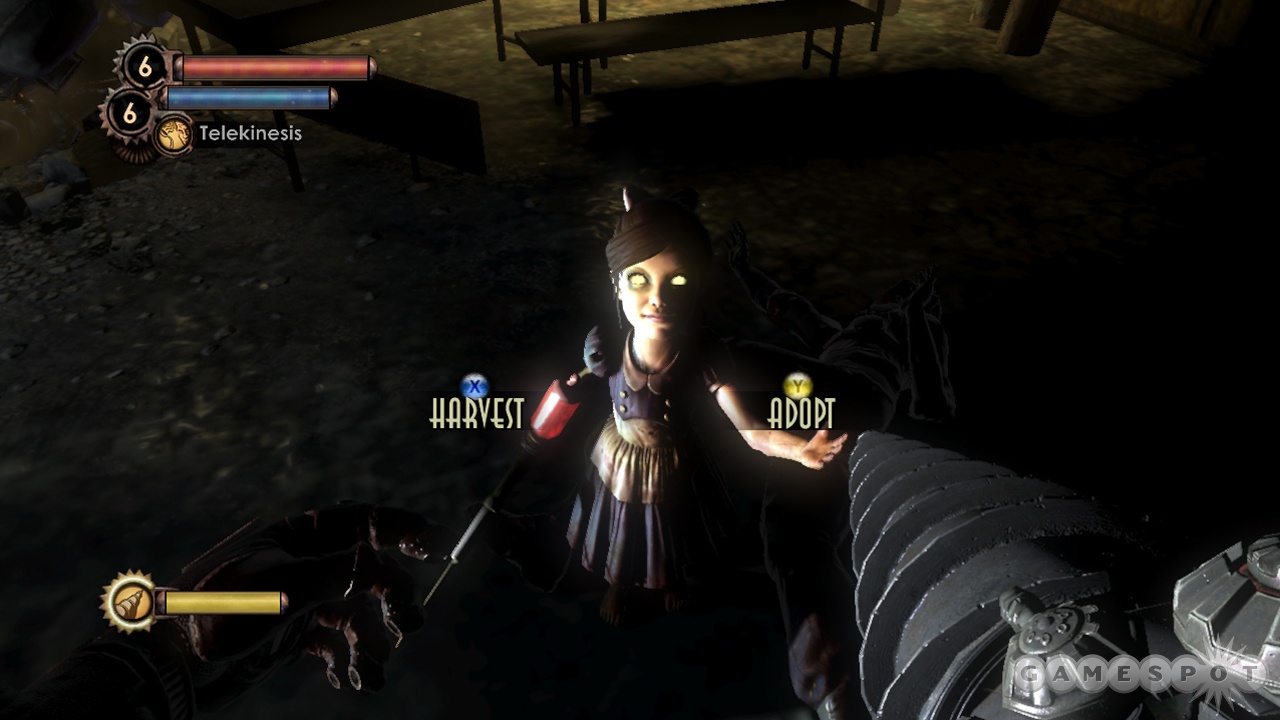Q&A: Dean Tate on BioShock 2
We catch up with 2K Australia senior designer, Dean Tate, to chat BioShock 2, dangerous local animals, and the challenges of working with geographically separated teams.
Undersea dystopian first-person shooter BioShock was released to universal critical acclaim in 2007, and not surprisingly, after the game’s success for publisher 2K Games, we’re now looking down the barrel of a sequel due out before the end of 2009. Australia’s 2K Canberra development team played an integral role in the first title, and will again contribute to all aspects in the upcoming follow-up. We caught up with senior designer, Dean Tate, to discuss the Aussie team’s involvement, attracting and keeping development talent, and making games via webcam.

GameSpot AU: Which aspects of BioShock 2 are 2K Australia currently contributing to the title?
Dean Tate: We have a dedicated team of BioShock veterans focused on bringing together a huge portion of the BioShock 2 experience. Level designers, artists, animators, you name it. These are people who 'get' what BioShock 2 is about due to their involvement in the first game, and aim to do an even greater job this time around. We're also overseeing development of the PC version of the game, and have a dedicated tech team focused on that; these guys are top notch, world-class, and represent one of the key strengths of the 2K Australia team.
GS AU: How does the relationship with 2K Marin work? Is the Aussie team involved in creative or level design decisions?
DT: You could call our relationship with the team in Marin symbiotic; there is much shared responsibility between the two studios, and we work quite collaboratively. We communicate with the Marin team constantly, even if that sometimes requires early mornings or late nights for some team members in order to maximise time zone overlap. The team at 2K Australia has been particularly critical in terms of rendering and engine technology; our crack team of tech guys are the ones that ensured that BioShock 1 looked and ran spectacularly well on all platforms (despite the game being almost comically overloaded with STUFF) and they aim to make the BioShock 2 experience even better--a tough job, considering that this game is full of even more STUFF; way more than BioShock. Some would say impossibly large amounts of STUFF, too much for any current-gen console to handle. Our tech team though, they just shrug their shoulders and say "yeah we can make all that crazy stuff happen, no probs", because they're crazy geniuses of epic proportions.
Then of course, you have the guys that are focusing on level design, art and gameplay systems. Two missions in particular have been handled from the outset here in Australia, with creative and visual direction being driven by a mix of BioShock 1 vets and talented newcomers alike, as well as getting our hands dirty working on a bunch of other parts of the game (other levels, game systems, etc). So from our perspective, we've had a lot to do with how the game looks, feels, and plays.
GS AU: The team here also worked on the first BioShock. How much has your involvement in the sequel increased compared to the first?
DT: I wouldn't say there's been any change in the amount of involvement we have, but there have been some pretty huge changes in the way we're working together. On BioShock, creative direction was driven almost exclusively by 2K Boston. This doesn't mean we weren't heavily involved in that, but it did mean that a lot of our developers spent large amount of times working and collaborating in-house with the Boston team (I myself spent almost two years in Boston). This time around, we've become much more adept at creating experiences that are creatively consistent with the game as a whole, while working remotely. As a result our relationship with 2K Marin is much more collaborative; we have more creative autonomy than we had on the original BioShock, and as a result the way that we work together has changed.
GS AU: What was the most challenging aspect of the development process in BioShock 2, and why? Did you find it difficult to coordinate the development process between three transnational teams?
DT: Definitely communication. My saying is always that until somebody invents teleportation technology, it's going to be tough to keep good communication going between two wildly remote teams. We do a great job of mitigating this problem though; the 3-4 hours of overlap that we have each day are put to good use, and our videoconference rooms are almost always busy. Everyone has a webcam as well, so in some ways we probably have more chatter going on between people in different offices than we do within those offices themselves!
Also, coordination isn't too difficult. The process we use and which has been pretty successful is to allocate whole tasks to different studios. Whether that be distinct levels, a port, multiplayer, whatever. This takes away the usual day-to-day need for constant interaction and just makes the process run more smoothly. This gives us a lot of creative autonomy as well, and we get great feedback on the things we've contributed.

GS AU: Given that BioShock 2 seems to be largely in the hands of the Marin studio, were you disappointed to not be the team developing the multiplayer component of the game rather than outsourcing it to Digital Extremes?
DT: You have to play to your strengths. Digital Extremes has a long history in the multiplayer gaming arena, they're proven experts in the field. As a studio we're psyched to have them working on Bio2 MP. As for us here at 2K Australia, I'll say that we're working on stuff that plays to our own strengths as a studio, and that'll show when you get to play the game. We have a great history and background in helping to craft the BioShock single-player experience, and we're playing to that strength in our contributions to BioShock 2.
GS AU: How long do you think it will be before an Aussie development team is solely handling the development of a big title like BioShock 2? What do you think needs to change in the Australian games development industry before this can happen?
DT: Not very long at all! There are definitely challenges to overcome before this can happen though. Creating a title that holds to the BioShock standard requires the right people. We want to ensure every title we ship is genre shaping, which makes finding those people quite a challenge, one that is enhanced by our location; Australia is sort of remote, and full of deadly animals with either large teeth or poisonous barb--sometimes both. So it can be tough to attract the talent we need, both abroad and within Australia. This is slowly changing though, and we take the attitude that if you make great games, you'll attract great people. We're lucky to have such a talented team here that is quite diverse; the majority of the team is Australian, but quite a large chunk of it comes from abroad. There is a huge challenge in allowing a team like this to grow and mature, and I think that this is something we're not alone in facing as a studio; it's something that affects the entire Australian Games Development industry.
And of course, creating high-profile AAA title is incredibly risky; not just in Australia, but everywhere. The Australian industry has some way to go before it has developed enough to gain the attention required to support several studios working on AAA titles. It'll happen, but it will take time. We're in an ideal situation right now with 2K, however. We can take the risks required to make great games backed by the support of an international company.
GS AU: How big is the team in Canberra? Are you working exclusively on BioShock 2?
DT: We're 45 people strong, and the only reason we don't have more is because we can't fit them in the studio! The suggestion of stackable desks has been bandied around, but not many people are in favour of it, understandably. We see the studio in a growth phase, and that's because we're not only working on BioShock 2, but also developing an unannounced title that we're extremely excited about.
GS AU: Dean Tate, thanks for your time.
Got a news tip or want to contact us directly? Email news@gamespot.com
Join the conversation